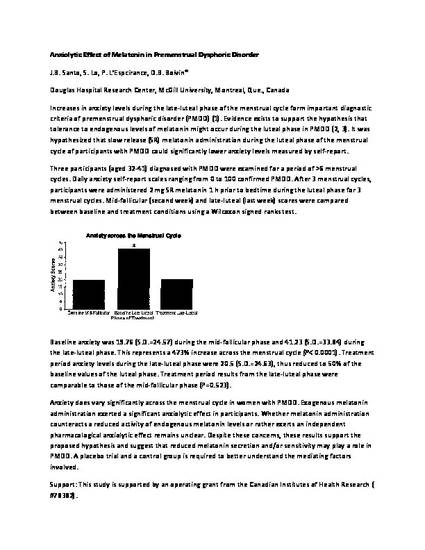
Article
Anxiolytic Effect of Melatonin in Premenstrual Dysphoric Disorder
International Journal of Psychophysiology
Document Type
Article
Publication Date
7-1-2002
Disciplines
Abstract
Increases in anxiety levels during the late-luteal phase of the menstrual cycle form important diagnostic criteria of premenstrual dysphoric disorder (PMDD) (1). Evidence exists to support the hypothesis that tolerance to endogenous levels of melatonin might occur during the luteal phase in PMDD (2, 3). It was hypothesized that slow release (SR) melatonin administration during the luteal phase of the menstrual cycle of participants with PMDD could significantly lower anxiety levels measured by self-report.
Citation Information
Jonathan Bruce Santo, S. Lo, P. L'Esperance and D. B. Boivin. "Anxiolytic Effect of Melatonin in Premenstrual Dysphoric Disorder" International Journal of Psychophysiology Vol. 45 Iss. 1-2 (2002) p. 173 - 173 Available at: http://works.bepress.com/jonathan_santo/15/

NOTICE: this is the author’s version of a work that was accepted for publication in International Journal of Psychophysiology. Changes resulting from the publishing process, such as peer review, editing, corrections, structural formatting, and other quality control mechanisms may not be reflected in this document. Changes may have been made to this work since it was submitted for publication. A definitive version was subsequently published in International Journal of Psychophysiology, Vol. 45, Issue 1-2 (July 2002) DOI# 10.1016/S0167-8760(02)00035-1.